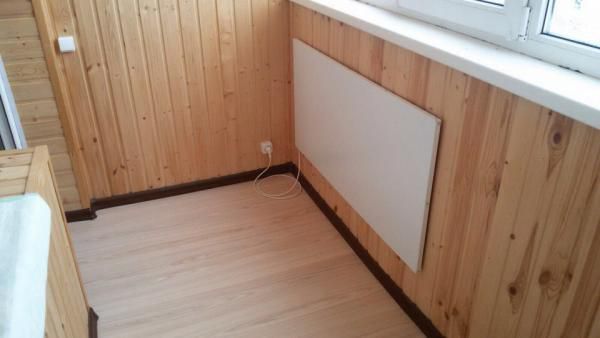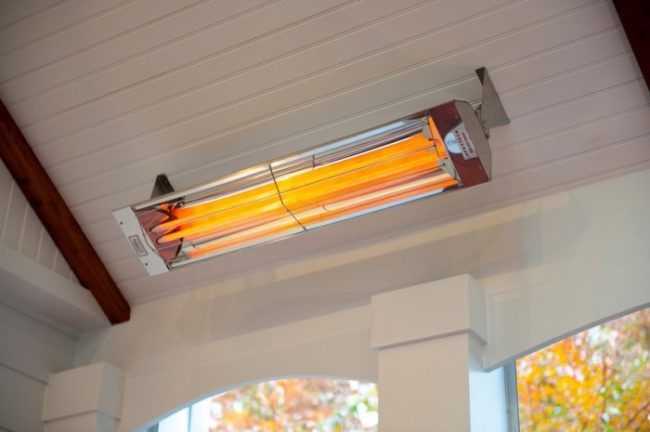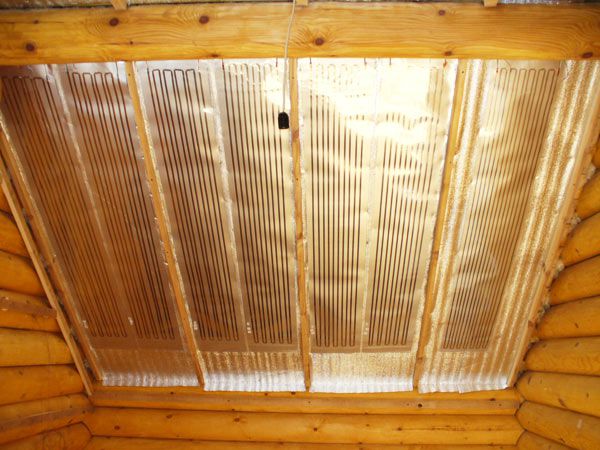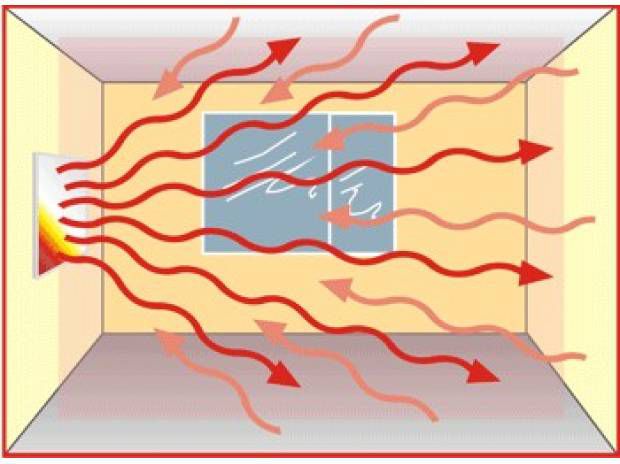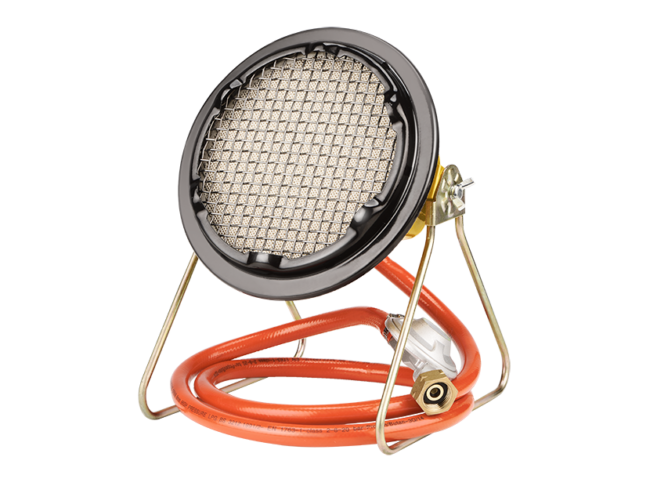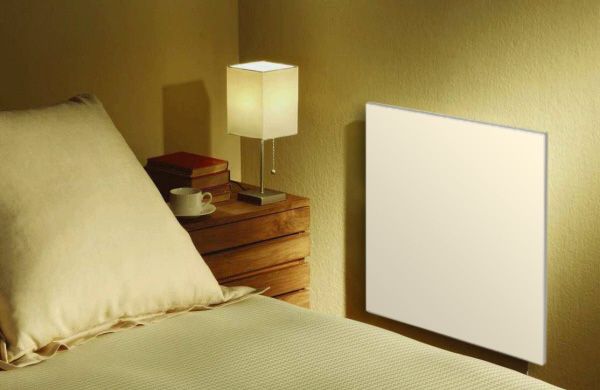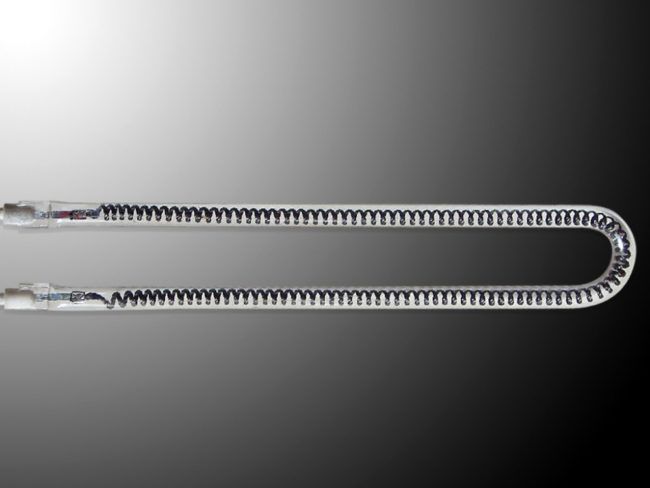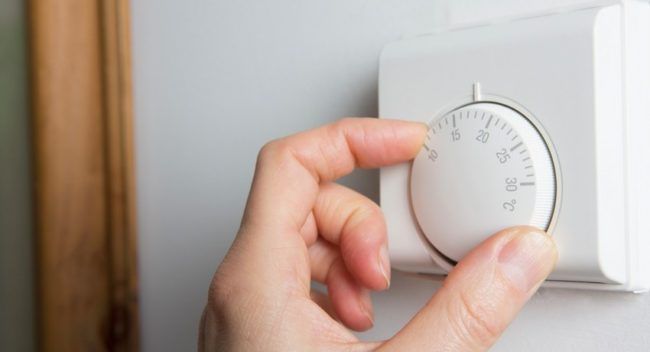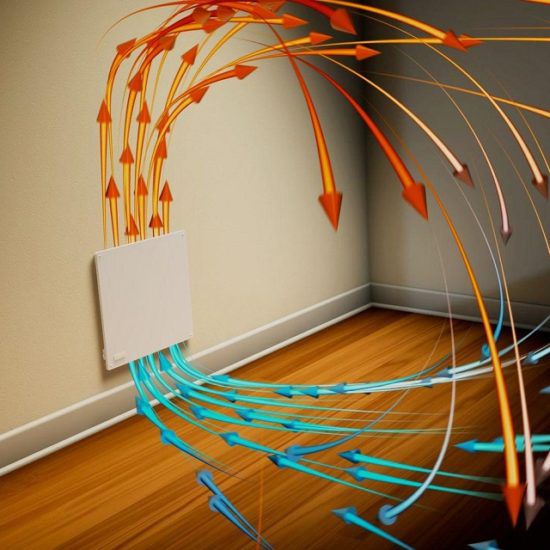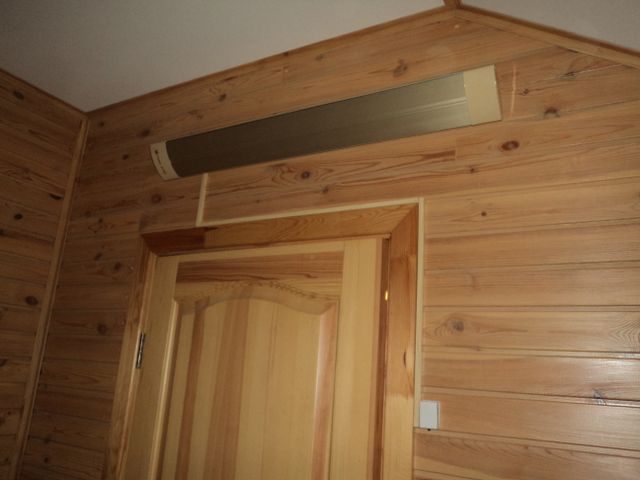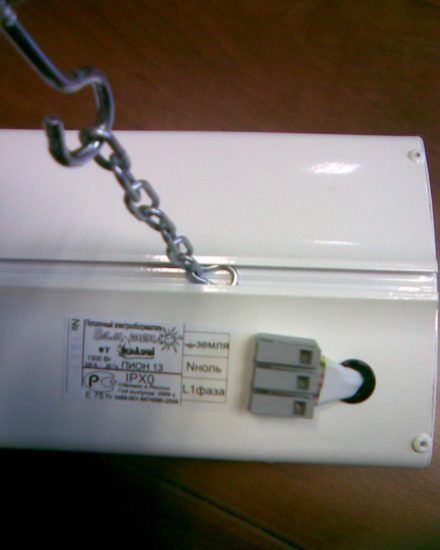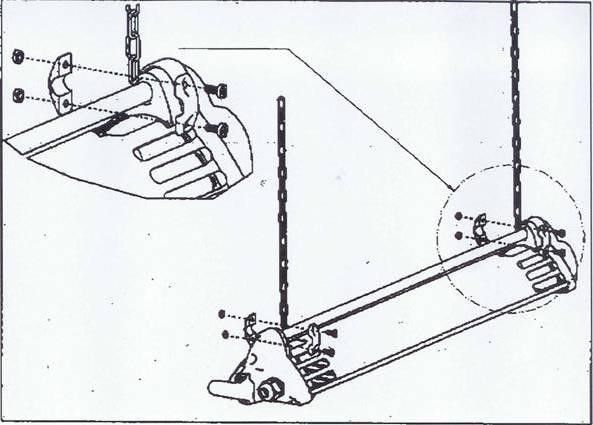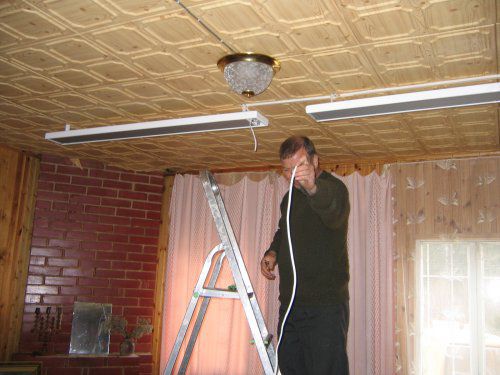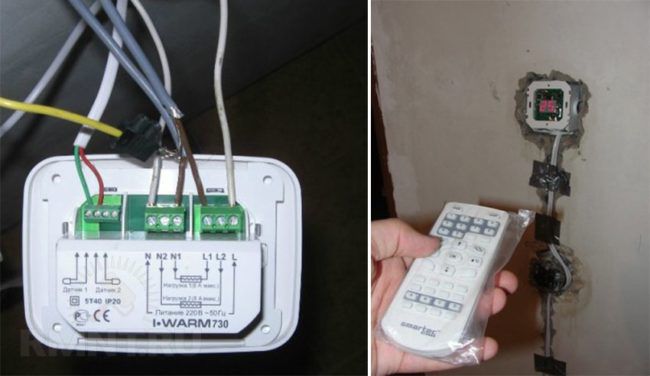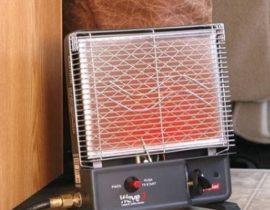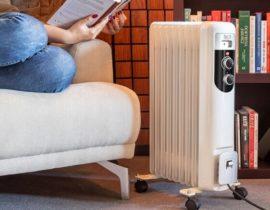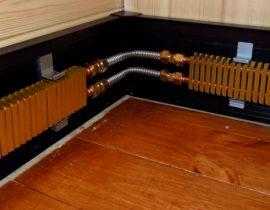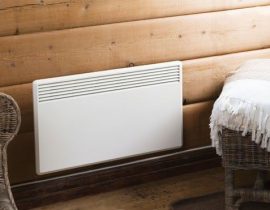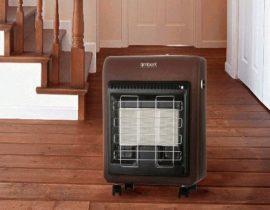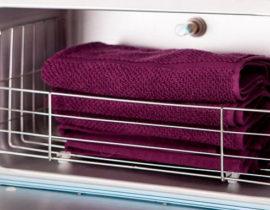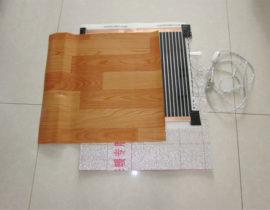Comfortable housing in a country house with optimal temperature conditions is the dream of any owner. Infrared heaters are able to give warmth and provide a favorable microclimate at any time of the year both in your country house and in the country, and if you spend a little more and choose a model with a thermostat, you will get maximum comfort and efficiency. Let's look at their main technical characteristics and installation principle in this article.
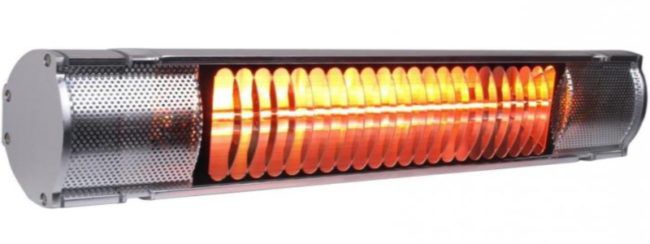
Lamp IR heater
The problem of home heating is perhaps one of the most pressing for the owners of country houses. It is one thing if the cottage needs to provide heating all year round. In this case, the best option would be to install a boiler, furnace and radiators. Another thing is if the dacha is a place of periodic pilgrimage for the owners. In this case, the installation of an expensive boiler, the installation of a chimney, the wiring of heating circuits and other difficulties are useless to the owners.
If the cottage is intended mainly for the summer stay of the owners, and in winter its owners only occasionally visit it, installing an infrared heater will be a very practical solution.

Infrared heater in the living room
Content
- The principle of operation of the infrared heater
- Design of infrared devices
- Advantages and disadvantages of an infrared heater
- How does an infrared heater with thermostat work?
- Types of infrared heaters
- Advantages of infrared heaters with thermostat
- How to choose an infrared heater for a summer residence?
- How to attach a ceiling infrared heater: step by step instructions
The principle of operation of the infrared heater
To understand the distinctive principle of operation of infrared heaters, one should recall the scheme of operation of a classical type heating system.

Comparison with the classical heating scheme
In the first case, the heating of the room occurs due to heat transfer from the device itself. When heated, heat radiates from the walls, which warms the room. The principle is simple, but not always effective, since it is very limited by the scale of the heater itself.
The second heating option operates on the principle of convection.

Convection heater type
This method is directly related to the aforementioned principle of heat transfer, only here there is a forced circulation of warm air flows. Devices, as a rule, are equipped with special fans that create convection currents. Despite the greater efficiency of this method, compared with a standard heat exchanger, it also has disadvantages.
Heating is often uneven. And such devices do not add comfort. Excessive noise, dust transfer, drafts - all this does little to create a homely atmosphere of comfort.

Infrared Ceiling Type Heater
And now we have come to the most important thing - the principle of operation of an infrared heater, which works in a completely different way.

The principle of operation of the IR heater
Here, the room is heated due to the propagation of electromagnetic waves that are in a given range: between the red border of the visible light spectrum (wavelength is 0.74 microns) and the region of microwave radio emission (from 1000 to 2000 microns).
This principle of work is taken from nature itself. This is how our planet extracts heat from solar energy flows, which is necessary for all living things. The atmosphere does not become an obstacle to these invisible waves. Therefore, when they reach the Earth, they cause heating of all opaque (from the point of view of wave physics) objects. And those, in turn, then give off heat to the air.
If in the classical scheme of operation of heaters thermal radiation is created, then in IR devices heating occurs due to electromagnetic waves. Devices operating according to the scheme for releasing thermal energy cannot maintain a comfortable microclimate in the room, especially if its area exceeds 15 square meters.
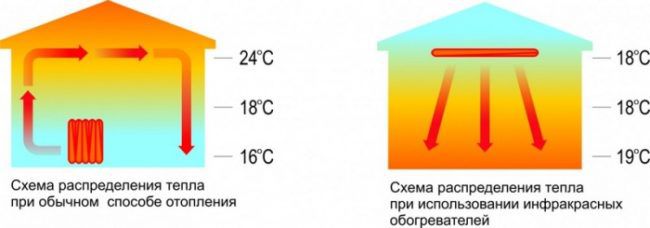
High efficiency of IR compared to standard heating system
The IR heater works on a different principle. Invisible red arrows (infrared rays) emanate from it in a certain sector, which by themselves do not heat the air, but only give off thermal energy to all opaque objects: walls, curtains, furniture, etc. And then the basic principle of heat transfer in the room is already included.
Design of infrared devices

Scheme of heating a country room using an infrared heater
The design of the IR heater has the following elements:
- reflector;
- heater;
- emitter;
- frame;
- insulator.
When choosing a model of a device for a summer residence, great attention should be paid to such an element as a heater. Excellent performance in terms of reliability and durability is demonstrated by devices made of stainless steel with an anodized coating.
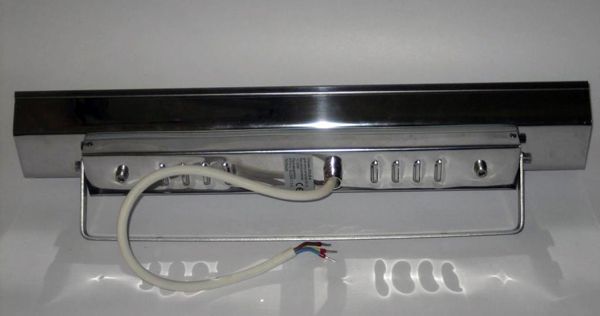
Reflector (rear view)
For normal operation of the heater, the thickness of the reflector foil must be at least 130 microns. If it is too thin, it will significantly reduce the performance and life of the device.
The insulator performs the function of retaining heat. Various materials can be used for this, basalt is considered one of the best.
Advantages and disadvantages of an infrared heater
This principle of operation allows us to note the following advantages of IR heaters:

Advantages of an IR heater
- Comfortable microclimate in the house. Warms up not only the area near the heater, but throughout the room. In addition, thanks to the principle of electromagnetic wave radiation, the floor, walls, and household items are heated. Unlike convection radiators, where only the air is heated, all clothes, blankets, carpets will also be warm.

Comfortable microclimate in the house
- Very high efficiency (almost 100%).
- Energy savings (but this is only subject to the installation of a thermostat).
- Doesn't dry out the air. A very important parameter if you care about a comfortable microclimate in the room. As you know, this indicator is affected not only by temperature, but also by humidity. Any heating devices (batteries, convection radiators, stoves) dry the air very much, which can make it uncomfortable to be in the house during the cold season.The IR heater, acting on a completely different principle of heat generation, does not dry out the air. Even with a long stay in a closed room in which an infrared device operates, you will not only be warm, but also comfortable.

The house has a good microclimate
- Efficient temperature distribution (the lower part of the room is heated more, and closer to the ceiling the temperature decreases).
- Low cost.
- The average life of an infrared heater is at least 20 years. Of course, we are talking about proper operation.
- Does not raise dust (unlike convection appliances).
- Allows to use as additional heating in especially cold season or in rooms where heating is not provided.

Mobility of the infrared heater
- Prevents the formation of fungus on the walls.
- Environmental friendliness and positive impact on human health.
- Stylish appearance.

Designer wall-mounted infrared heater built into the painting
- Quiet operation.
Despite the visible advantages of IR heaters, there are several disadvantages.
- Devices of low power cannot maintain a comfortable microclimate in all corners of the room. Usually, when leaving the zone of reach of the rays, a significant decrease in temperature is felt.
- The second drawback is related to the impact on the human body. And although the safety of infrared heaters has long been scientifically proven, there are cases of individual intolerance to electromagnetic waves.

It is not recommended to look at the infrared heater for a long time
With a long stay near such aggregates, a person begins to feel a burning sensation in the eyes, there is a dry eye syndrome.Experts do not recommend looking at the heating element of the IR heater for a long time, as this can damage the cornea of the eye.
- We should not forget that the infrared heater creates a rather serious load on the power grid, which can become a serious threat to old electrical wiring.

Short circuit consequences
Therefore, if your dacha has been standing for more than a dozen years and you are not too sure about the quality of the electrical wiring, then you should soberly assess its condition before buying and installing an infrared device. It may be necessary to replace the electrical wiring in the house.
How does an infrared heater with thermostat work?
An infrared heater with a thermostat works on the same principle, with the only difference being that it will maintain the set temperature. This allows you to create a comfortable microclimate in the room and save electricity. Reaching the set temperature, it automatically turns off and does not work until the room temperature drops below the set value.

Modern thermostat
If such a device does not have a thermostat, this greatly complicates the life of the owners. After all, you will have to turn the device on and off manually, personally monitoring the temperature in the room.
In terms of heating efficiency, there is no difference between conventional IR devices and those equipped with automatic thermostats. They heat objects equally well and create a natural heat exchange in the room.
Types of infrared heaters
Today, the modern market offers many infrared heaters with thermostats, which differ not only in size, design and technical characteristics, but also in the installation method.
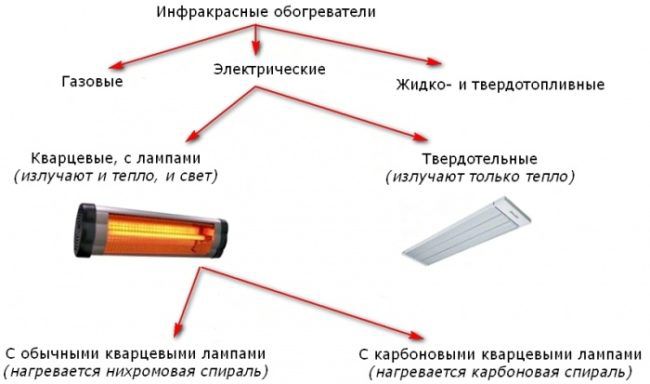
IR heater classification
Let's look at the main classification, which will allow you to make a choice and purchase the optimal model of an IR heater for a summer residence.
By location
- Ceiling. The device is mounted directly on the ceiling. This saves space in the room, but here the rule should be taken into account: the higher the ceiling, the greater the power of the device should be bought. And, conversely, houses with low ceilings are not suitable for powerful appliances.

Ceiling IR heater
Today, a wide variety of ceiling IR heaters on the market allows you to choose a model that resembles an ordinary lamp in appearance. This allows you to fit heating devices into any design and style of the room.
The undoubted advantage of the ceiling model is the uniform heating of the room, but subject to a sufficient height of the ceilings. If the height of the room is relatively small, then it is better to refuse this type of device.
- Wall. Convenient wall mounting allows you to save space, free up space in the room. In appearance, they are very reminiscent of a radiator (battery).

Wall IR heater
Often, such a model is installed in a comfort zone (in a restaurant, in a cafe, in a gazebo in the country). Today you can find wall panel infrared heaters that perform a dual function: space heating and decoration. A photographic film imitating a picture is applied to the glass or ceramic surface of such units.
Useful advice! If you want to stylishly decorate your home, you can order an individual production of a wall-mounted infrared heater with a photo or any image.

Stylish wall-mounted infrared heater
Of course, the price of such a device will be much higher, but the original design will delight every day.
- Mobile. This is the most versatile option, as it allows you to move it from room to room, as needed.
 It is a small heating device installed on the floor and powered by the mains. Some models are equipped with a gas supply element, which eliminates the need to connect to the mains. Such models are characterized by high efficiency (98-99%) and are safe to use, as they are protected against tipping over and immediately turn off. Mobility is perhaps the most important plus of such devices, because they can always be moved to a colder part of the room, creating a pleasant atmosphere.
It is a small heating device installed on the floor and powered by the mains. Some models are equipped with a gas supply element, which eliminates the need to connect to the mains. Such models are characterized by high efficiency (98-99%) and are safe to use, as they are protected against tipping over and immediately turn off. Mobility is perhaps the most important plus of such devices, because they can always be moved to a colder part of the room, creating a pleasant atmosphere.
By type of construction
- Panel. The device is a thin panel of a rectangular or square shape, inside of which there are heating elements.

Panel IR heater for home
- In the form of lamps. Here, spiral reflectors act as heating elements.

Lamps act as a heating element
- Film. This device is a thin polymer film on which heating elements are applied that emit electromagnetic waves. According to this principle, a warm floor (infrared floor) works. Also, the film can be attached under the ceiling.

Film IR heater
The undeniable advantage is that this version of the heating element can be mounted anywhere, even in a room with very low ceilings. In terms of economy, this is a very good option for giving.
By radiation intensity

Radiation intensity of IR heater
- The most powerful devices operate in the short wavelength range (from 0.74 microns to 2.5 microns). Since they have a large coverage area, these models are usually purchased for heating shopping centers, cafes, restaurants, etc. On a domestic scale, for heating a workshop or a shopping center, for safety reasons, they are not used. An excellent solution is to place IR devices of such power on the open terraces of a cafe.
- Medium power devices have a radiation range from 2.5 µm to 50 µm. They are usually also purchased for public needs and placed in cafes, salons, and shops.

IR shortwave
- Long-wave IR heaters, which are the safest for humans, have less power. Their radiation range lies within 50-1000 microns. Such units are usually produced for private use (for heating an apartment, a country house, an office). The radiation of this wavelength is the most favorable for the human body. They can even be installed for preschools and hospitals.
By type of coolant used
- Electric. This type of heater is the safest, most versatile and practical. In such devices, there is always a heating element, from which electromagnetic radiation comes. The transmission of the beam energy flow is provided by special reflectors.To improve performance, reflectors made of steel or aluminum are most often shaped by manufacturers into a spiral or sphere.
- Gas. These devices operate autonomously from the mains and are connected to a cylinder of liquefied gas (propane). As a rule, such units are chosen for heating workshops, utility rooms. The intensity of the device is adjusted using a rotary valve, which sets the rate of gas flow into the device.

Gas infrared heater
Such IR heaters show good performance and fuel economy, which cannot be said about fire safety. It is recommended to install them only in rooms with good ventilation, otherwise carbon monoxide poisoning may occur.
- Diesel. They operate on the same principle as gas, but diesel is the coolant here. Of course, we are not talking about buying such a device for the country. They are not safe, and besides, during operation there is a constant pungent smell of fuel.
Video: Compact gas infrared heater.
According to the material of manufacture of the heating element
- Ceramics. Inside the heater there are ceramic plates on which heat is evenly distributed. They are characterized by high performance and allow you to save up to 35% of electricity. A plate made of ceramics is not a single cast form, but consists of many individual elements. This allows you to increase the resistance to mechanical damage and make the structure more durable.

Ceramic infrared heater
- Quartz.These devices use a tungsten filament as a radiation source, which is placed in a quartz tube. Sometimes manufacturers use a monolithic slab, filling it with quartz sand.
- Halogen. Inside devices of this type is a tube filled with an inert gas.
- Carbon.

The carbon fiber
Here, carbon (carbon) fiber is used as a radiation source, which is placed in a quartz tube. Such devices are highly economical and have very high performance. It is also one of the most useful IR heaters, which have a pronounced therapeutic effect on the human body. They warm the body deeply, stimulating blood circulation. It is these infrared devices that are used for medical purposes in physiotherapy rooms, allowing the treatment of rheumatism and other diseases.
Advantages of infrared heaters with thermostat
- Saving electricity. Taking into account that the set room temperature is provided by the thermostat, the total operating time per day is approximately 12-13 hours. Thus, electricity costs are almost halved.
- Ease of use. Needless to say, it is very convenient for home owners to set the temperature in the house once and calmly go about their daily business. The mechanism will turn itself off when the temperature rises to a critical point, and after cooling the air in the room and lowering the set temperature, the device will automatically resume operation.

The thermostat is convenient, safe and economical
There is no need to constantly check the temperature, turn the IR heater on and off.Yes, and leaving the house for two days with such a device will be quite safe. Upon returning, the atmosphere in the house will be warm and cozy.
- Safety. The automatic sensor itself maintains the temperature, turning off the device when it reaches a critical point.
- Quiet operation. Modern sensors operate absolutely silently, not "notifying" others about turning the device on and off.
There are low temperature, medium temperature and high temperature heaters.
- 300-1200 degrees Celsius - high temperature;
- 60-500 degrees Celsius - medium temperature;
- up to 60 degrees Celsius - low temperature.
How to choose an infrared heater for a summer residence?
So, after we have considered the main classification of IR heaters, let's decide which model is best to choose for a summer residence.

Choosing the best model for giving
- The safest and most practical option for the type of coolant would be an electrical appliance.
- When choosing a wavelength range, give preference to long-wave radiation (50-1000 km). For the human body, this is the most optimal range of action.
- The power of the device is often a fundamental criterion when choosing an IR heater. A simple calculation applies here - 100 W / 1 m2. Therefore, it will not be difficult for you to determine the required power of the unit for you. If you are looking for a device for giving, which does not have good thermal insulation, then the specific power of the device can be taken a little higher (120 W / 1 m2).

Appliance power
- The thermostat will allow you to create a good microclimate in the country, free up time and increase the efficiency of electricity consumption.
- Instrument case. It is advisable to choose models made of steel or aluminum.A steel heater will cost you less, but its disadvantage is a lot of weight. If you plan to mount the device to plastic or plasterboard ceilings, then it is better to give preference to a model made of aluminum. In this case, the housing does not affect the efficiency and service life. Here it is necessary to take into account exactly the material from which the floors are made.
- Room dimensions. The device should not block the premises and prevent free movement. For a small room where there is very little usable area, it is better to install a ceiling system or a wall unit.

IR heater should not clutter up the space in the room
- Additional options. Many models are equipped with useful features such as emergency shutdown in case of accidental tipping over, protection against short circuit, overheating, etc. In a house where pets and small children live, purchasing such IR heaters will not be a waste of money.
- Protection against moisture and condensation. In the country, where the owners come from time to time, as a rule, there is high humidity and low air temperature. When turning on the heating device, there is a risk of condensation. Pay attention to the label on the packaging. The “IP24” sign means that the infrared device is reliably protected even from a large accumulation of moisture and this will not affect its performance in any way.
Let's make a brief overview of the main IR heaters on the market to make it easier to make the choice of the best model for giving.
Which thermostat to choose?
The principle of operation of all infrared heaters equipped with a thermostat is approximately the same. However, the temperature control devices themselves differ in the principle of operation.
- The simplest and most budgetary option is a step thermostat. Each heating element is switched on individually, depending on the temperature in the room. The possibility of turning off the heating element after a specified period of time in this case is not provided.

Mechanical thermostat
- Mechanical thermostat. This is a more advanced form of temperature control, which allows you to set the desired temperature and a certain period of time after which the mechanism will turn off. The heater will not be able to maintain the same temperature all the time.
- Electronic thermostat. Such devices are equipped with a thermostat that automatically turns off the power to the infrared heater when the set temperature is reached. Very convenient is a mobile thermostat, which, if necessary, can be removed from the device. More expensive modern models allow you to gently switch the temperature, set the waiting time, device operation, automatic shutdown, etc. If you want to protect yourself and are afraid to leave the device on when you leave the cottage, then you can choose a model with a delayed automatic shutdown. For ease of use, many devices are equipped with an electronic display, which displays information about the current air temperature, set value, operating time and automatic shutdown.

Electronic thermostat
- Thermostats with remote control. Here we are talking more about the comfort of the owner of the house than the distinctive technical characteristics. Some manufacturers today offer improved models of thermostats that are connected to the general system for maintaining the microclimate in the house. The device independently determines when it is necessary to turn on and turn off the IR heater.How practical and rational it is, it is up to each individual to decide.
- Smart thermostat that can be controlled remotely from a smartphone or tablet. Through a special program, you can remotely set the desired temperature parameters, turn on and turn off the device.

Smart thermostat
Of course, the price of such a gadget will be above average.
Also separate external and internal thermostats.
The internal thermostat (built into the housing) greatly simplifies the mounting scheme of the device. You do not have to do additional wiring. But there is also a disadvantage of this type of device. Such a thermostat reacts critically to the temperature near the heater, and it does not always equal the temperature in the room. In this case, the thermostat may work before the set time, preventing the device from properly warming up the room.
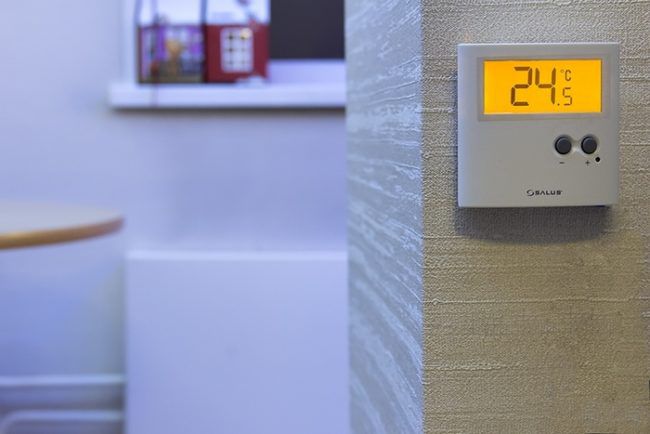
External thermostat on IR heaters
An external thermostat will require some skill from you during installation. But on the other hand, his readings will always be correct, because he will take into account the temperature in the room, and not near the body of the infrared heater.
How to attach a ceiling infrared heater: step by step instructions
Video. Mounting the IR heater to the ceiling
Installation of this type of heater does not require special skills and efforts. By following our detailed step-by-step instructions, you will surely cope.
Of the tools you will need:
- screwdriver or puncher (if the ceiling is concrete);
- self-tapping screws;
- building level and tape measure.
As a rule, each infrared heater comes with a mounting kit (self-tapping screws, screws, brackets), but these elements may not be enough if the ceilings are very low or they are made of concrete.
Rules for installing an IR heater on the ceiling (minimum distance from the surface)
| Power | A, mm | B, mm | C,mm | D, mm | E, mm |
|---|---|---|---|---|---|
| 0.8 kW | 100 | 150 | 500 | 1800 | 700 |
| 1 kW | 100 | 150 | 500 | 1800 | 700 |
| 2 kW | 100 | 150 | 500 | 1800 | 1500 |
| 3 kW | 120 | 200 | 1000 | 2500 | 2150 |
| 4 kW | 120 | 200 | 1000 | 2500 | 2150 |
- Decide on the place where the IN heater will hang. Consider the power of the appliance, the height of the ceilings, as well as the need to care for the panel.

Placing above a door will create a barrier against cold drafts
It is advisable to install a ceiling infrared heater at the entrance doors. Thus, warm air will act as a barrier against cold drafts. Also, do not place the device above a sleeping place, a sofa for relaxation, a workplace.
- Make a mark on the ceiling where the heater will be placed according to its shape and type of mounting. The fastening line must run strictly parallel to the axis of the heating element.
- We make ceiling mounts: use a screwdriver to make holes in the ceiling and screw in the hooks (brackets) that come with the device. If the ceiling is concrete, then in this case you will need a puncher and additional brackets. Install 2 fasteners on each hook (bracket), otherwise they may not support the weight of the heater.

Ceiling mounts
- If the room has very high ceilings, and you do not want to reduce the efficiency of the IR heater, attach the chains that come with the kit to the brackets.

Chain attachment
If such chains are not supplied in the set of the model you have chosen, you can always buy them in addition.This will allow you to further adjust the height of the IR heater.
- Take the heater out of the package and place it on any horizontal surface with the heating plate down. Behind the panel, find the plug, under which the wire entry is hidden. Take it off.

Back of panel
If the model of your heater came unassembled, then assemble it before installation according to the instructions that come with the kit.
- Connect the wire respectively where “zero” and “phase” are indicated and close the heater cover.
- Hang the heater from the ceiling exactly according to the fasteners. Make sure that the screws that fit into the fastener slots are firmly fixed.

Fastening
- Now we are engaged in electrical wiring. Connect a three-core cable with a section that matches the electrical load in your home. (we recommend PVA 3*1.5).

Ceiling connection
- Connect the ends of the cable to the terminals located on the heater. At the same time, observe the polarity that is indicated on the cable itself and on the heater panel.
- Before using for the first time, wipe the heat radiating plate with a cloth soaked in an alcohol solution. During installation, fingerprints could remain on it, which will reduce the efficiency of the device.
- Connect the thermostat to the heater. Decide where it will be located. It is recommended to maintain a distance of 150 cm from the floor. Do not install the thermostat in a draft or in the area of direct sunlight, electromagnetic waves. This may cause false positives. When choosing a thermostat for a heater, be sure to compare the power - they must work in the same range.
Important! There must be a layer of insulation between the heat regulator and the wall, otherwise, due to the cold wall, the device's readings may not be correct.
- From the circuit breaker we bring two wires zero and phase to the thermostat.

Temperature sensor installation
Thus, the thermostat turns out to be the middle link along the wire path from the machine to the IR heater.
- We open the connection socket and connect the thermostat to the heater (installation is carried out taking into account the marking of the device). If you install two infrared heaters with one thermostat in the room, then use the parallel type of connection. Otherwise, the installation scheme for both devices will be identical.
Important! During the first test of the equipment, you may notice an unpleasant odor. This is only temporary and will usually go away after 2 hours.
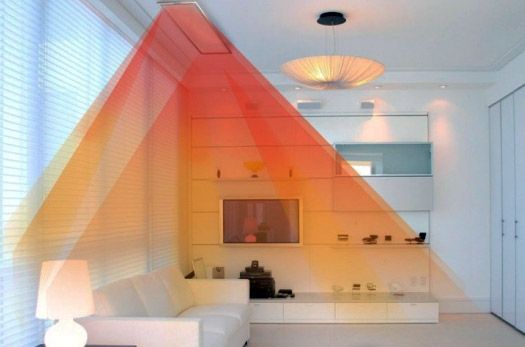
IR heater provides a comfortable microclimate
Summing up, I would like to say that a good infrared heater with a thermostat is a great purchase for a summer residence and a well-invested money! You will not only save money on utility bills, but also guarantee a good microclimate in the house with minimal labor costs. Other people build fireplaces and solid fuel stoves in the country, but just imagine how difficult it is to take care of them and store the necessary amount of fuel!

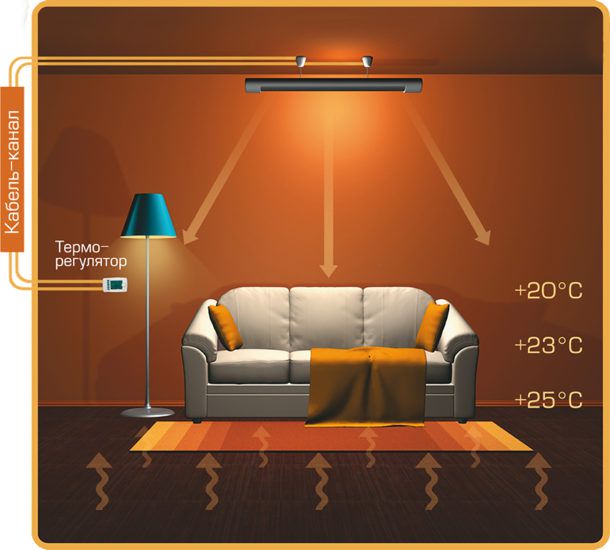
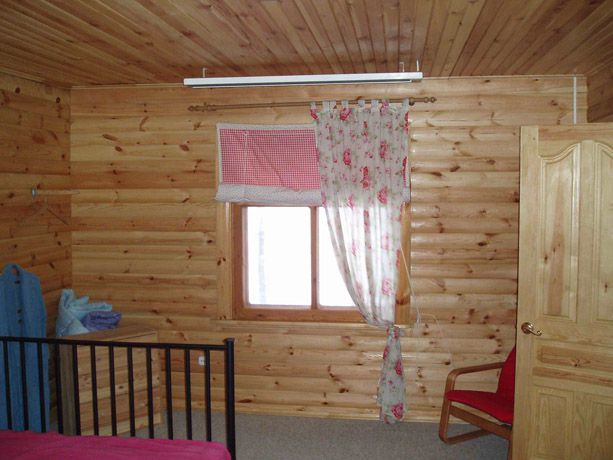
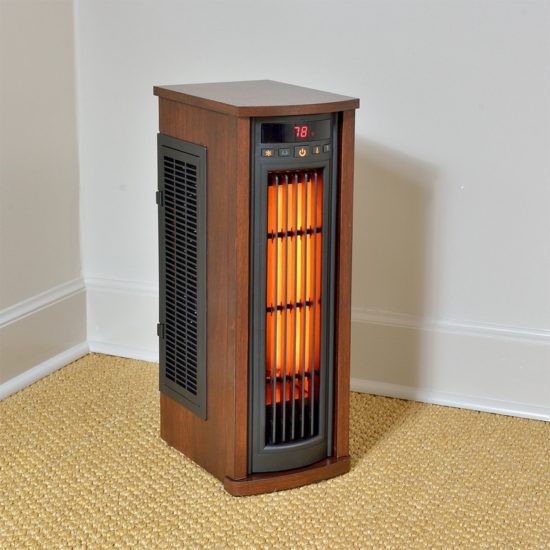
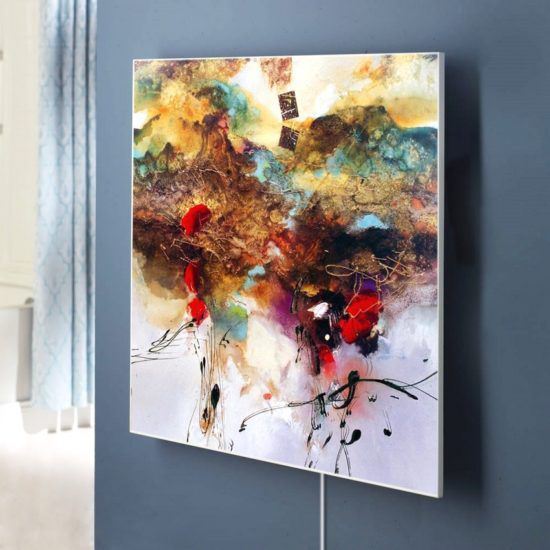

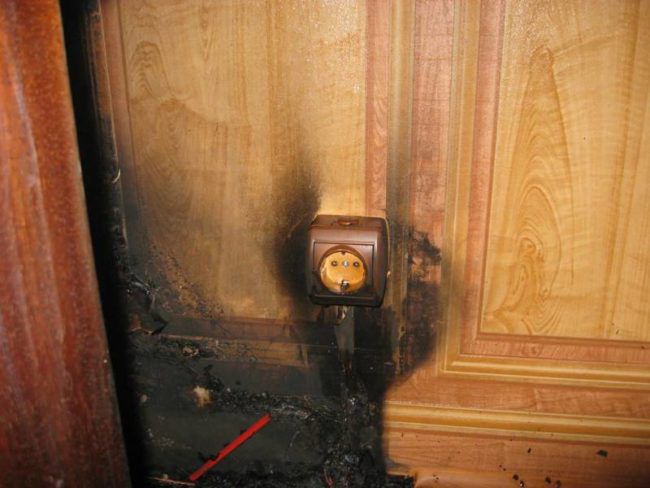
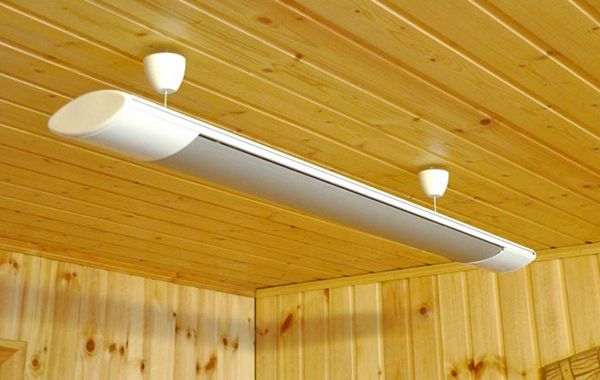
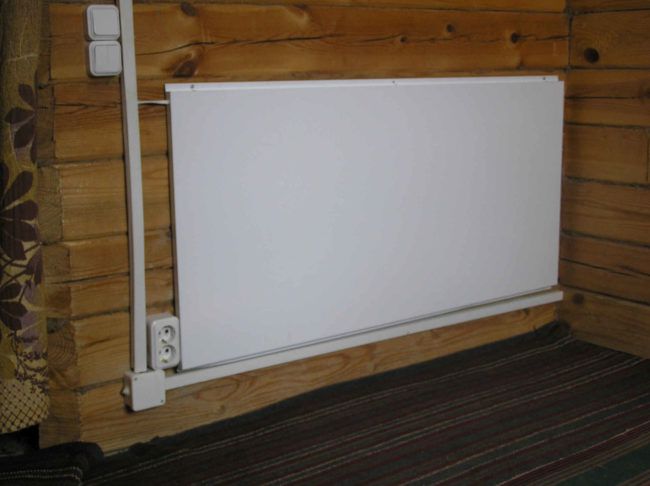
 It is a small heating device installed on the floor and powered by the mains. Some models are equipped with a gas supply element, which eliminates the need to connect to the mains. Such models are characterized by high efficiency (98-99%) and are safe to use, as they are protected against tipping over and immediately turn off. Mobility is perhaps the most important plus of such devices, because they can always be moved to a colder part of the room, creating a pleasant atmosphere.
It is a small heating device installed on the floor and powered by the mains. Some models are equipped with a gas supply element, which eliminates the need to connect to the mains. Such models are characterized by high efficiency (98-99%) and are safe to use, as they are protected against tipping over and immediately turn off. Mobility is perhaps the most important plus of such devices, because they can always be moved to a colder part of the room, creating a pleasant atmosphere.